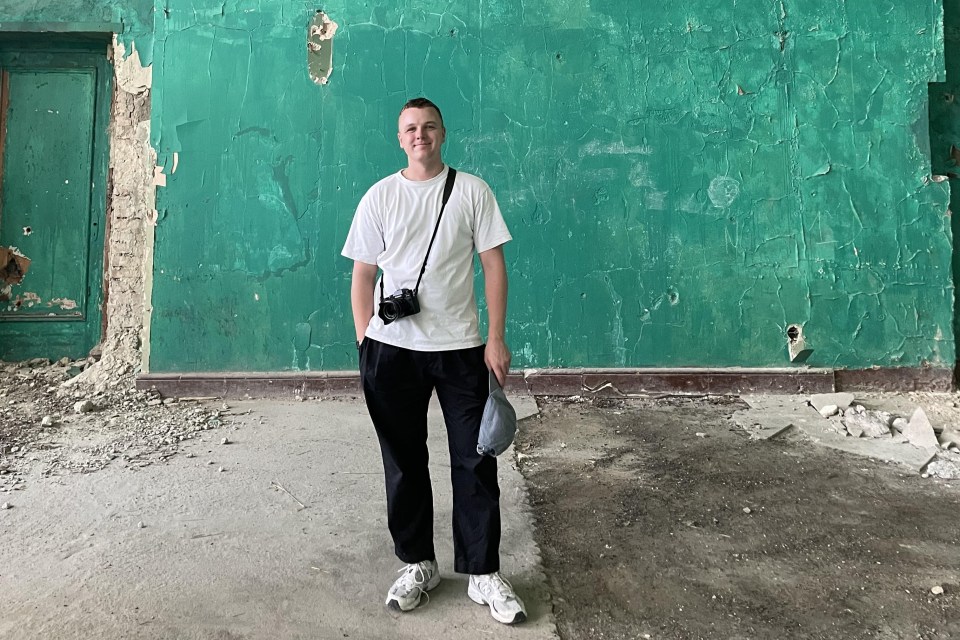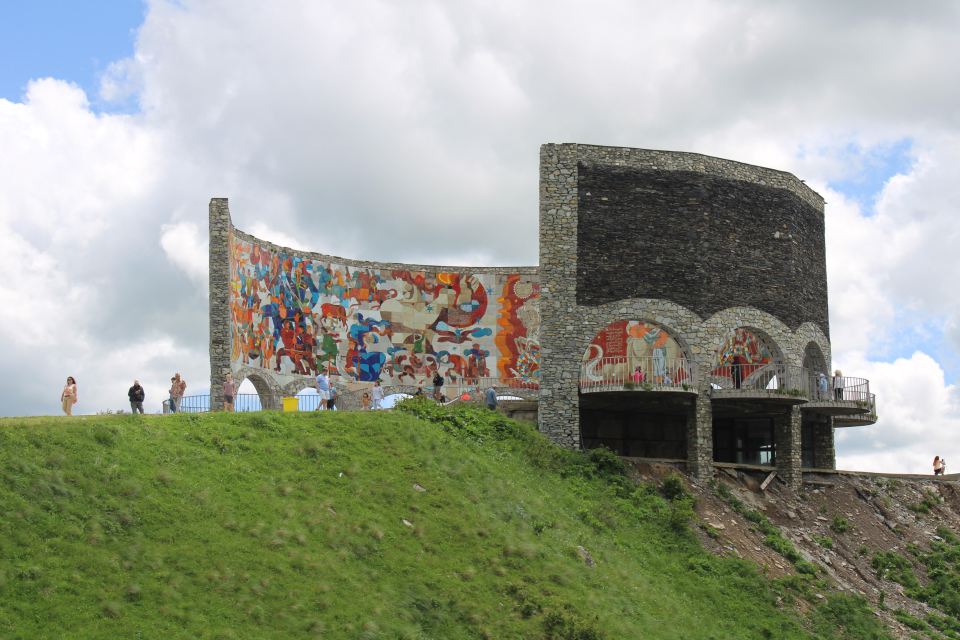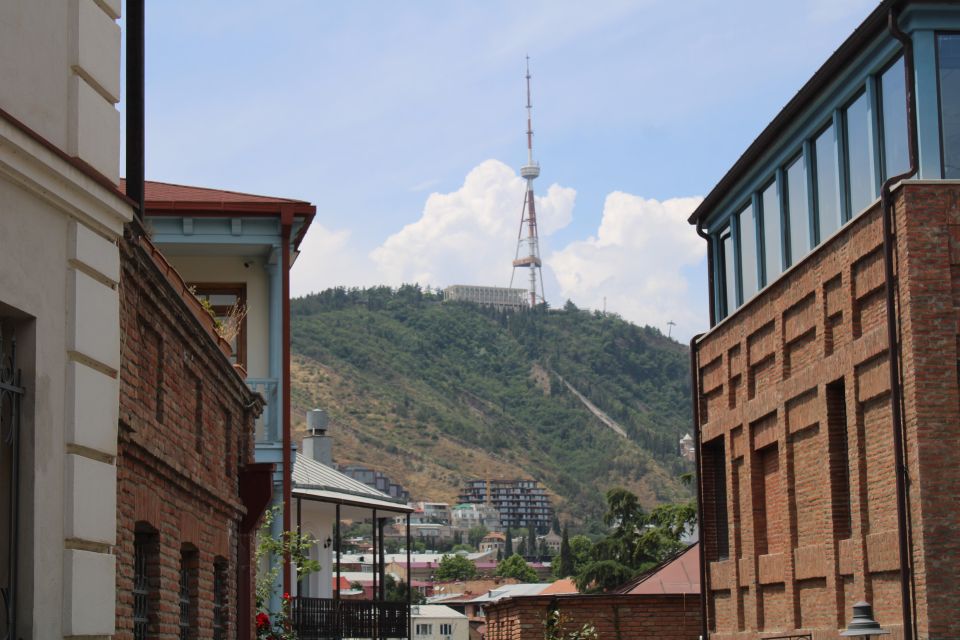I’M walking through a European capital’s historic old town, marvelling at the picturesque narrow streets and romantic balconies.
I’ve just finished an amazing meal dining on some of the country’s celebrated delicacies and I’m heading towards a chic bar where people are spilling out onto the street, drinking glasses of excellent local wine.
Your mind probably jumps to the tourist hotspots popular with Brits – Paris or maybe somewhere in Spain?
However, I’m far from those well-trodden places, in a much cheaper and undiscovered part of Europe.
A clash between old and new defines Georgia’s capital, Tbilisi.
From the vantage point of the ancient Narikala castle, you can see the colourful old town, the dramatic Soviet-era apartment blocks which surround the centre, and modern glass offices.
Georgians have used this clash to create something chaotic and truly wonderful.
Take Mutant Radio. It’s an outdoor bar built in a disused Soviet power station, with a live radio station pumping music through the cavernous space.
Or Fabrika, an abandoned Soviet clothes factory now filled with buzzing restaurants, bars and a hotel.
Rooms here celebrate the building’s industrial heritage and start at just £40 a night.
Georgians are also reinventing their widely celebrated food.
Traditional styles are still well worth trying – khachapuri is the dish you can’t miss.
Described as a ‘cousin’ of pizza, it’s a canoe-shaped dough vessel for melted cheese, topped with an egg.
It’s rich and delicious – just try not to think about your waistline while you’re eating it.
But Georgians have brought their cuisine into the 21st century.
Ezo is situated in a peaceful courtyard and serves a fusion of Georgian and Middle-Eastern dishes.
Mains only cost around £7 and a glass of local wine is shockingly cheap at £2.50.
You’ll have lots to do in Tbilisi beyond eating and drinking.
Tpili is the Old Georgian word for warm and the city is named after the hot sulphur springs around which it was established.
Exhaust yourself exploring the Old Town in the summer highs of 35C, then relax without breaking the bank at Gulo’s Spa.
A luxury private room with three different temperature pools and a massage only costs £45.
DOWN TO EARTH
And there are plenty of surprises beyond the capital.
If you love wine, you’re in the right place. Georgians claim to have invented the tipple 8,000 years ago.
Head East to Kahketi, the wine-producing region.
The Lost Ridge Inn near the town of Signagi offers natural wine and craft beer tasting in their beautiful garden.
Their approach is far from the snobbery you might find in other countries.
They speak to you in plain English and want you to focus on enjoying what you’re drinking as you take in the views of the region’s dramatic scenery.
The price is down to earth as well – a wine-tasting experience is only £13.
For nature lovers, there are the mountains in the north.
Drive to Qazbegi on the border with Russia and hike up to the centuries-old Gergeti Trinity Church.
The views are worth the effort.
A word of warning – Georgian drivers are some of the most ambitious in Europe.
This can lead to some hair-raising moments on winding mountain roads.
Beaches can be found in the west on the Black Sea and a brand new highway has cut the travel time to the coast.
Skip Batumi, a playground for rich Russian exiles, and instead head to Kobuleti.
The little seaside town is a popular holiday spot for locals – think Georgian Cornwall.
Along the way, you’ll pass through Gori, the birthplace of Joseph Stalin.
Stop off to see the perfectly preserved wooden shack where the dictator spent his first four years and the museum dedicated to his life.
Although it’s worth noting that in the massive museum, there is little mention of his millions of victims.
The museum again shows the contrasts of this country.
A short history of Tbilisi
TBILISI dates back to the 5th century, when King Vakhtang I of Iberia founded the city.
According to legend, King Vakhtang discovered the area’s hot springs when he was out hunting and decided to build a city there.
The name Tbilisi itself is derived from the Georgian word tbili, meaning warm – about these springs.
Throughout its history, Tbilisi has been a coveted prize for various empires because of its strategic position.
It’s been occupied by the Persians, Arabs Byzantines, and Mongols at different points in its history.
But in the early 12th century, under the reign of King David IV (David the Builder), Tbilisi became the capital of a unified Georgian state and experienced a period of significant growth and cultural development.
The city continued to flourish during the reign of Queen Tamar in the late 12th and early 13th centuries, a time often referred to as the Georgian Golden Age.
In the 19th century, Tbilisi came under Russian control and served as an important administrative and cultural centre in the Caucasus, undergoing significant modernisation and expansion at the time.
Tbilisi played a crucial role during the brief period of Georgian independence following the Russian Revolution in 1917, but it was soon incorporated into the Soviet Union in 1921.
The city remained an important hub within the Soviet Union until Georgia regained its independence in 1991.
In Tbilisi, you’ll find graffiti trashing Putin and urging the country to embrace the West.
Yet here is a temple to the totalitarian leader.
This clash is sadly playing out on the streets.
Georgia’s winter was defined by protests against a new Russian-leaning government.
It’s an undiscovered country in transition, but this transition has created surprises for tourists of all tastes and budgets.
And with EasyJet just starting their first ever direct flights to the country, get there before everyone else wakes up to it.

























